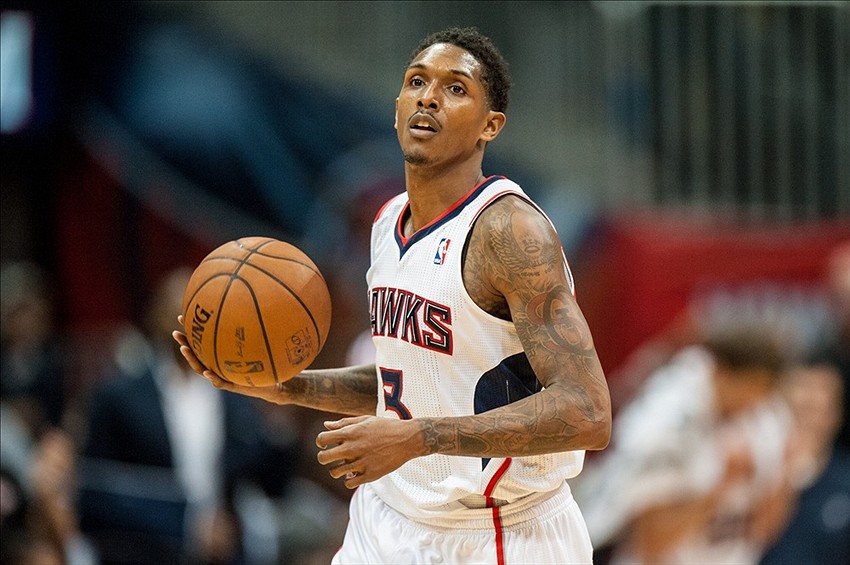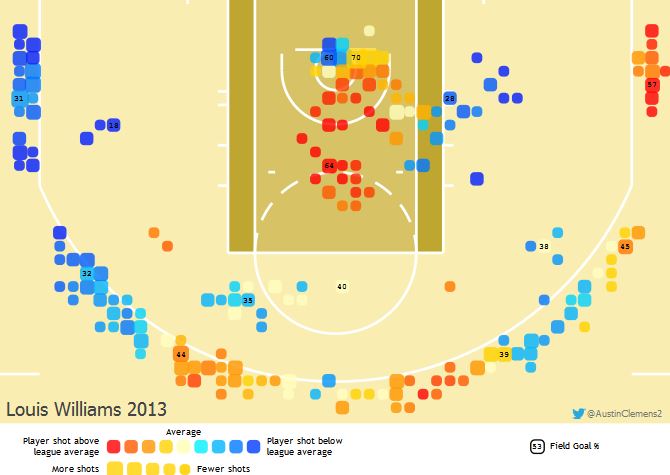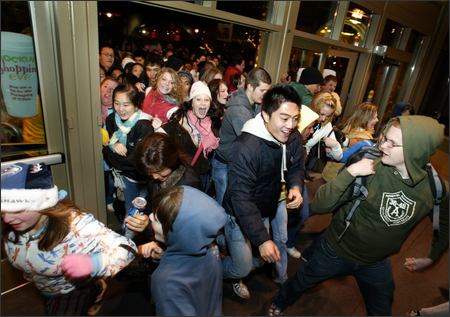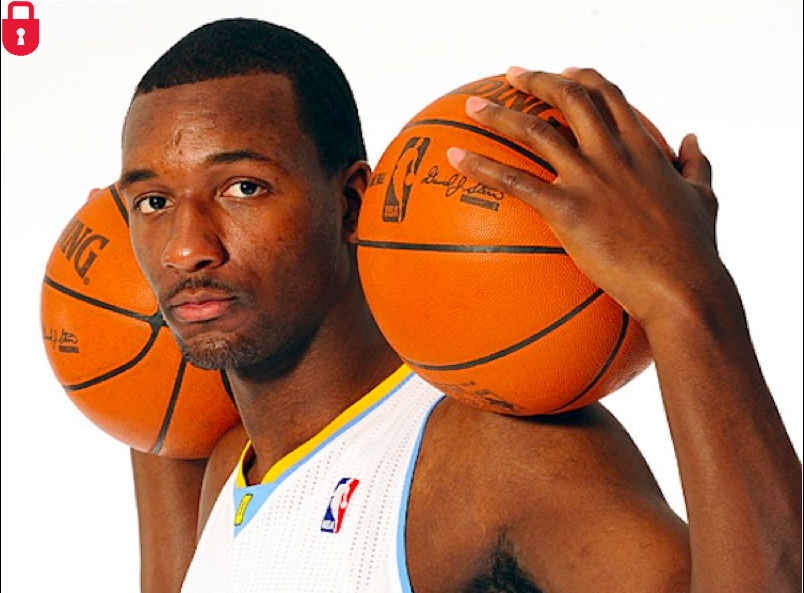I’ll never get over how weird this name thing is.
For the most part, it’s been something of a dull summer for the Toronto Raptors.
While other teams in the conference made sizable roster moves — Chicago landing Pau Gasol, Charlotte nabbing Lance Stephenson, Cavaliers signing James Jones — the Raptors largely stood pat. General manager Masai Ujiri doubled-down in betting on chemistry and development, electing to re-sign Kyle Lowry, Patrick Patterson and Greivis Vasquez. Save for the addition of James Johnson, the eight-man rotation is mostly unchanged from last season.
The conversation of whether or not it was smart for Ujiri to stand pat will be had on another day. Clearly, he felt confident in the team’s current core to compete, and opted to make marginal improvements elsewhere. The gamble on Johnson is a perfect example — if he’s the player he was for Memphis last season, the Raptors land themselves a big perimeter stopper on the cheap.
The same practice of marginal improvements also applies to his other notable offseason acquisition, that of Bebe Nogueira and Lou Williams, which came by way of the Atlanta Hawks in a trade for John Salmons. I touched on Bebe (wow that sounds awful) in a post earlier. This here is a profile for my namesake Lou Williams.
Age: 27
Position: Combo guard
Stats profile: 10.4 points, 2.1 rebounds, 3.5 assists in 24.1 minutes per game
Nickname: Sweet Lou
Twittersphere nickname: LouTrillVille
Williams is a scorer, first and foremost. He likes having the ball in his hands, and despite being undersized by weight (175 pounds) and height (6-foot-2), Williams has a large wingspan which coupled with his ball-handling and quickness, allows him to be an effective scorer.
With Williams, there’s a point to distinguish between isolation scorer and ball-hog. While Williams isn’t the most inclined to pass out of a double-team — preferring instead to take side-leaning floaters — he has posted eight-straight seasons with an assist percentage of over 20 percent. In comparison, DeRozan’s career-high is 18.9 percent, which came last season. Williams’ mark ranked 53rd last season, which is far from good, but for a score-first combo guard, it’s reassuring that he does occasionally set up others.
The second thing to note is scoring efficiency. Williams isn’t a good shooter from the field (shot chart below), but by shooting a decent number of free-throws (36.3 FT rate) and three-pointers (46.9 3PTA rate), Williams manages to notch his true-shooting percentage to just above league-average. Last season, Williams only shot 40 percent from the field and 34.2 percent from deep, but he still managed a TS% of 54.7. For an off-the-bench, isolation combo guard, scoring at an league average rate is useful. We’re not dealing with Alan Anderson, for example.
Shot chart courtesy of Nylon Calculus
This brings us to how Williams scores his points. Quite simply, he’s the prototypical bench scorer. In an interview with Basketball Insiders, Williams disclosed what the team expects of him.
They just want me to be in shape, they want Greivis [Vasquez] and I to come off the bench and give them energy, score the basketball and play with excitement
Williams mostly makes his living in the pick-and-roll, which accounted for over a third of his possessions last season, according to Synergy Sports. Of his 182 possessions, Williams pulled up for three approximately a third of the time, connecting on 42.2 percent of his tries. On the whole, he scored 0.88 points per pick-and-roll, which ranked 34th last season.
Before rupturing his ACL, Williams used to challenge shot blockers with the occasional dunk. His play lasts season was far more conservative, as he opted instead to finish his drives with floaters and running jumpers. It’s an alright shot, and allows Williams to finish at a respectable rate. He sunk 47.1 percent of his tries from 3-t0-10 feet, and surprisingly netted 67.2 percent between 0-3 feet, though that could in-part be inflated to his propensity to leak out for Corey Brewer-esque cherry-picked buckets.
[gfy]OilyFaithfulClingfish[/gfy]
Williams makes it work in the pick-and-roll with craftiness. He’s has great ball skills and he’s quick, which permits him to get by defenders. He also has a subtle herky-jerky change of pace game, which also helps in drawing fouls. He averaged 4.5 free-throw attempts per 36 minutes, a mark that ranked 29th amongst guards last season, besting the likes of Mike Conley, Tony Parker and Reggie Jackson. He knows how to leverage his skills to draw contact, then sell it effectively. Being slight also helps in that regard.
[gfy]NextMessyIaerismetalmark[/gfy]
Williams also doubles as a spot-up shooter, which in-part helps him to thrive in two-point guard lineups, something he should see plenty of in Toronto alongside either Lowry or Vasquez. He attempted 98 spot-up three-pointers in Atlanta’s three-point happy scheme last season, connecting on a respectable 36.7 percent. The season prior, Williams knocked down 50.8 percent (31-for-61). His true ability on spot-ups likely sits somewhere in-between.
In two-point guard lineups, Williams should serve as an effective outlet after an initial pick-and-roll. He likes to attack off the dribble or simply launch threes from above-the-break. He should reprise the role filled by Salmons last season, only he can, y’know, play NBA basketball.
However, offensive capabilities aside, Williams struggles on defense. It’s a two-pronged problem — he’s both undersized and inattentive. He’s serviceable in on-ball scenarios, having forced turnovers on over 20 percent of his pick-and-roll defensive possessions, but he really can’t defend spot-up scenarios, allowing an alarming 1.1 points per possession.
The off-ball thing is a worry because he spends a fair amount of time trailing behind two-guards, getting lost in screens and whatnot. Almost a third of his defensive possessions last year came via spot-up, of which he allowed opponents to connect on 48.8 percent of three-point tries. Take the play below for example. What is he thinking helping out on a Rubio drive, when there’s a help defender in Gustavo Ayon rotating over to protect the rim? His curious decision gives up a wide open corner triple.
[gfy]FrailSardonicCassowary[/gfy]
Nine years into his professional career, the defensive issues won’t correct themselves, especially given Williams’ declining athleticism. For what it’s worth, he says he doesn’t even think about his knee 90 percent of the time, but having suffered a serious injury just 18 months ago, his durability will always be a question. If he’s having to trade pull-ups for forays to the basket, he’ll unfortunately blend into the blase of jumpshooters that currently paints the squad. Like with any guard, Williams is most effective when he operates in an even mix of drives and spot-ups.
And if his health does fail him, the Raptors are only tied to him for a year, making this season a test-trial for both him and the franchise. If he steps in and provides the Raptors with a much-needed fourth ball-handler while keeping his heat-checks in tow, he’ll net himself a lucrative deal — either here or elsewhere — to continue gunning. If he instead becomes a black hole who no longer sinks enough triples to offset his low field-goal percentage, the Raptors could easily sever their ties. It’s a gamble that could pay dividends for a roster looking to improve on its previous standing.
Oh, and he’s from the ATL, so you know he can spit that fire. Look for Williams’ latest verse to drop in Full Court Press, Vol. 1 which also features fellow NBAers Shawn Marion, Iman Shumpert, Charlie Villanueva and Stephen Jackson.






